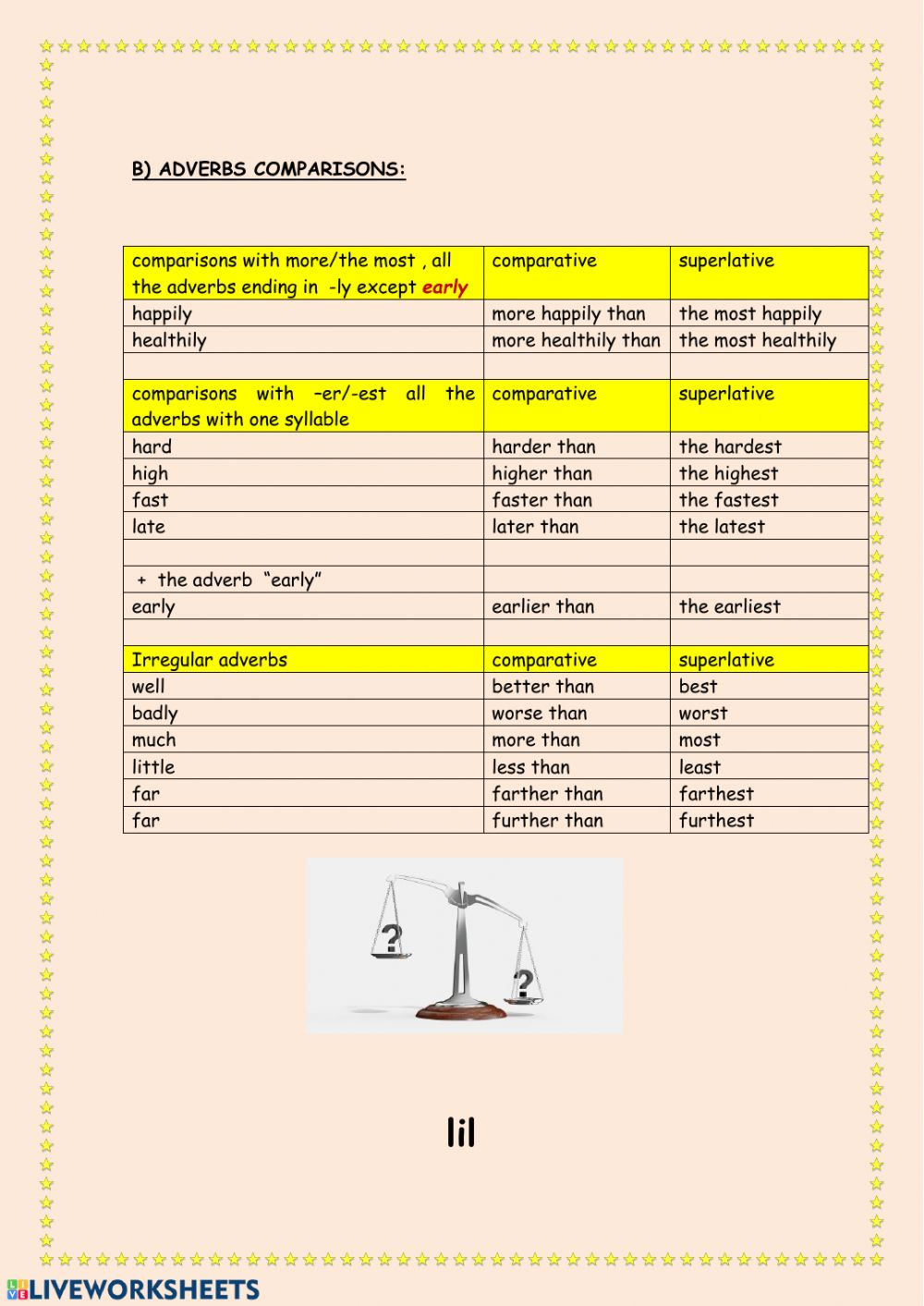Circling Adverbs Worksheet Answers – Adverbs are used to refer to an adjective or a verb. Adverbs are used to indicate the time and place it was done. They are typically used in conjunction with the verb or adjective that they alter.
Here are a few examples:
He ran quickly.
She sang beautifully.
They can communicate fluently in English.
There are many ways to create adjectives. There are a variety of methods for making adverbs. There is also the possibility of creating more adverbs using various words.
He drives slowly.
He was on time.
Adverbs may be placed at the beginning or end of sentences. The intention behind the adjective determines where it will be placed.
As you can see, adverbs to modify verbs usually go after the verb. Adverbs that alter adjectives, as well as other adverbs should be placed before the adjective or another adjective they modify.
For example:
He is a slow driver. (incorrect)
He’s a slow driver. (correct)
He drives slowly. (correct)
They were there very quickly. (correct)
They were there promptly. (incorrect)
Find out more about Adverbs. These worksheets will help you to practice using the adverbs in sentences. The worksheets cover three areas including the identification and use of adjectival terms; and making adjectival phrases.
Take a look at a few sentences and mark the adverbs in each sentence. The first section focuses on the recognition of Adverbs. The next section, Adverbs: Practice, will help you learn to make use of adverbs in the form of adjectives and verbs. The third section will instruct you on how you can convert adjectives to adverbs.
What are you waiting on? Grab your pencil and take a look at these worksheets for adverbs.
Adverb Worksheets: Types and their uses
An adverb is a word which describes a verb an adjective, or a different word. Adverbs are able to tell you when, where and how it was done. Adverbs are usually placed after the word.
He slowly moved around the room.
For instance, many adjectival terms can be constructed by adding an -ly after an adjective.
Adjective Slow
Adverb: slowly
Adjective: quick
Adverb: quickly
Adjective: hard
Adverb: Hard
An adjective can be one-word-or multi-word. For instance, the -ly form is a one word adjective.
He was slow to move around the space.
Multi-word adverbs comprise of several words, such as:
He moved slowly throughout the room.
These are some of the most common multiword adverbs
adverb + adverb: quite slowly, extremely quickly
Adverb + adjective Very hot, very cool
Preposition + Adverb = without delay, at the front
There are two kinds of adverbs.
1. Adverbs that define a manner
The adverbs of fashion tell us what is being accomplished. Consider this example:
He moved slowly through each room.
This sentence slowly reveals how the man moved.
These are just a few instances, but they provide a description of the process.
Quickly, slowly, quietly and loudly.
2. Place-related Adverbs
Adverbs of place can be used to identify the location of something. Let’s use this example as an example:
He walked around the room.
The adverb in this sentence lets us know the direction he taken a walk.
These are only a handful of examples of adjudicatives for place.
Outside, upstairs, downstairs, and everywhere else
There are also adverbs to define frequency and time. Adverbs that refer to time are a good option to show when something was accomplished.
Slowly, he moved through the room.
The sentence is based on the slow adjectival.
Adverb worksheets: Tips and Tricks
Adverbs are words which modify adjectives, verbs or other adjectives. These worksheets can help you teach your students the many ways in which adverbs are employed. Here are some helpful tips and tricks that choice support to get the most value out of your adverb worksheets.
1. There are many sentences.
You can use adverbs in many different sentences. It is crucial to mix it with your worksheets. Simple sentences can be paired with complex sentences and even questions. Students will be able to discover the many uses of adjectival terms.
2. To highlight, you may make use of the Adverbs.
Make sure to mark the adverbs inside each sentence when creating worksheets. This will help your students to spot the adverbs. Highlight all adverbs in one colour or choose a different colour to symbolize each sentence.
3. Allow your students to make their own sentences.
Students should not just fill in the blanks on their worksheets, but they should also compose sentences with adverbs. They’ll be capable of understanding the use of adjectives in writing.
FAQs on Adverb Worksheets
1. What are adverbs exactly?
An adverb is a description of an adjective, verb, or other word. Adverbs are used in order to identify when and where something happens. They usually end with”-ly
2. These are the most common four types you can use in Adverbs
There are four types.
3. What can I do to use adverbs in my writing?
Adverbs are used to define verbs and adjectives. These adverbs can help create writing that is more informative and interesting.
4. Are there any examples of common adjectives?
Adverbs that are commonly used are: quickly slow, but slowly; poorly well; hard soft, both in the early and later not always, but occasionally, and frequently.






